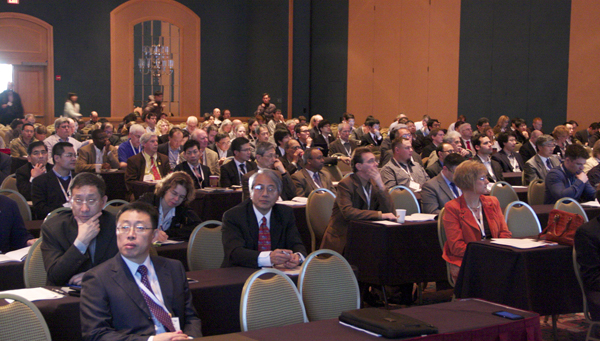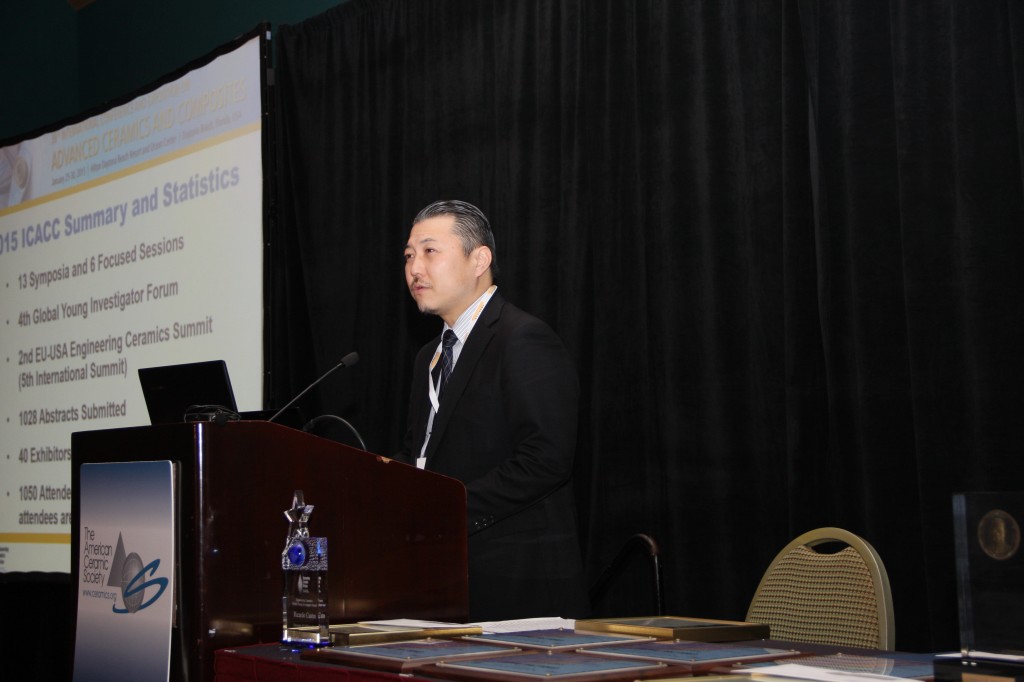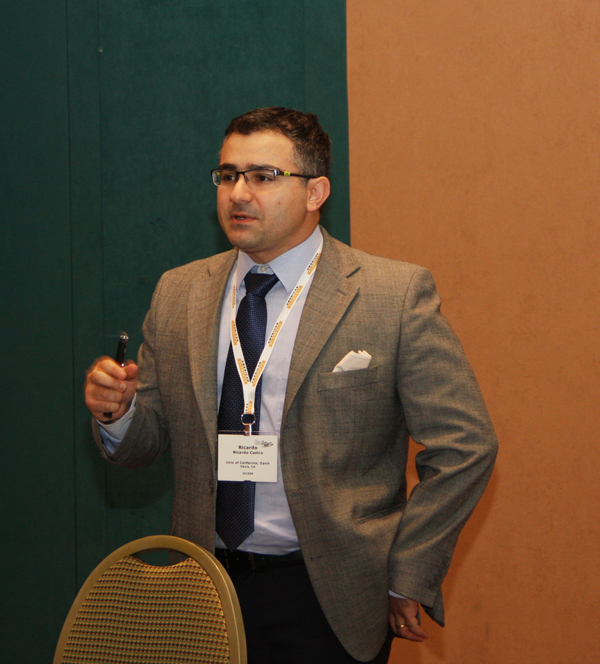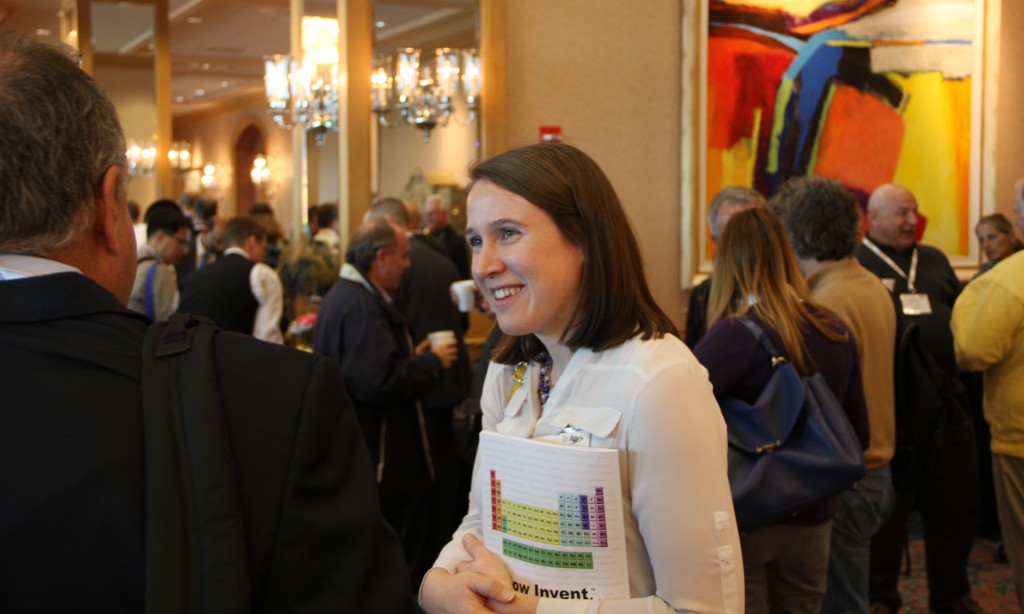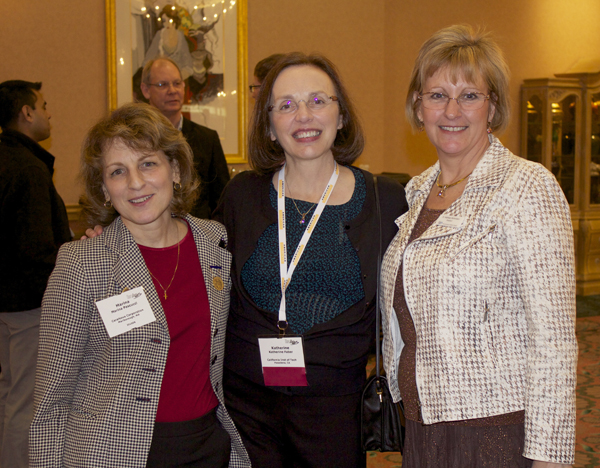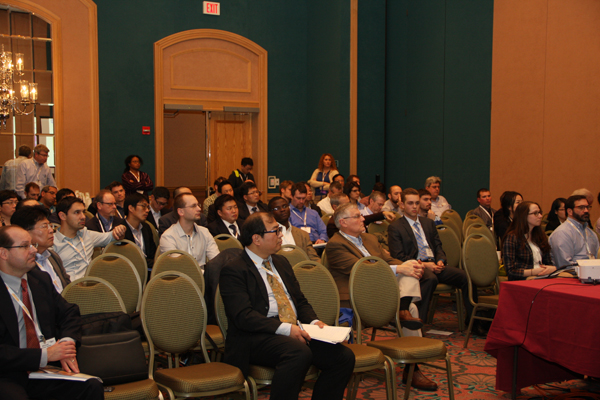
[Image above] More than 1,100 scientists and engineers have escaped winter’s wrath and converged on Daytona Beach for the 39th edition of the International Conference on Advanced Ceramics and Composites. Credit: ACerS
The 39th edition of the International Conference on Advanced Ceramics and Composites opened Monday in Daytona Beach. While the northeastern United States braces for an epic snowstorm, about 1,100 scientists and engineers from around the world are here to attend symposia, give presentations, network, and meet customers and vendors at the expo.
Program chair Soshu Kirihara opened the conference. This year nearly half the attendees traveled from about 40 countries—probably the largest international contingent ever for this conference. Also this year, the conference accepted a record number of abstracts and so spilled over into some other areas of the hotel.
David R. Clarke opened the plenary technical session with the James I. Mueller Award lecture on materials selection of next-generation thermal barrier coatings (TBC) for gas turbine engines. About one-third of the U.S. natural gas supply generates about 40% of the nation’s electric power. “Gas turbines can displace a lot of coal,” Clarke says. Natural gas has a high energy density, and one gas turbine produces more power than the world’s largest solar power plant.
TBCs increase the efficiency of turbines by allowing them to run much hotter that nickel base superalloy substrates can tolerate. Clarke’s data showed that the temperature limit of superalloy substrates has increased only about 100°C over the last 40 years. A yttria-stabilized zirconia (YSZ) TBC gains about one degree of operating temperature for every millimeter of thickness. TBCs typically are 150–200 micrometers thick, thereby “buying” up to 200°C of operating temperature—and efficiency.
Clarke suggested that, in the future, turbine ceramic matrix composites may replace superalloy substrates, possibly with a TBC, too. Luminescent ions embedded into TBCs may serve as in situ sensors. Some challenges remain, including NOx emissions, which limit the maximum combustion temperature. Within hotter engines, ingested sand and dirt can melt and seize up the turbine with glassy deposits. Susceptibility of metallic components to silicon dioxide corrosion remains an open problem.
Sanjay Mathur—the 2015 Bridge Building Award winner—presented his group’s work on chemical processing of nanostructured ceramics. “Precursor chemistry influences where a material is going,” Mathur says. Using energy and healthcare applications as examples, Mathur showed how precursor chemistry of inorganic materials influences functionality of the final product. For example, doping small amounts of nitrogen into titanium dioxide increases bioactivity of nanoparticles for osseointegration.
He showed how one material—iron oxide—can be engineered on the nanoscale through chemical processing for very different applications. He showed his group’s work synthesizing iron oxide nanoparticles for MRI applications and as a catalyst for water splitting with light for the hydrogen economy.
(Mathur was unruffled when a fire alarm interrupted his talk. Thirty minutes later, after the “all clear,” he calmly picked up where he was and finished.)
Two plenary talks followed the award lectures. The talks met the expectation of a plenary to be of general interest, technically interesting, but not too “in the weeds.”
First up was Cato Laurencin. Laurencin is a star—his resume could easily have made his (very smart, high-achieving) audience feel like slackers. However, he quickly qualified himself as a materials scientist—”one of us”—whose passion is to engineer materials into tissue—which also requires that he be a surgeon and biochemical researcher.
Laurencin works at the forefront of the new field of “regenerative engineering.” This field engineers materials to promote tissue growth so that the material does not substitute for the body, but rather facilitates, in various ways, the growth and reconstruction of tissue. Laurencin, as an orthopeadic surgeon, researches musculoskeletal issues and used the knee to demonstrate his points.
The field of regenerative engineering is young—only about 25 years old. Laurencin reviewed its history and some of the field’s successes, for example with bone scaffolds that promote bone growth and dissappear as the growing bone absorbs their chemical constituents. Today, the field is much broader and amazing advances are being realized by integrating tissue with advanced materials and stem cells.
For example, Laurencin says it is possible to create any tissue type—bone, muscle, ligament, cartilage, and skin—from “inductive materials.” He explains, “Take a stem cell and, by placing it in the right material, you can cause it to differentiate into what ever you want with no additional biological factors.” He showed an example of bone built outside the body by placing stem cells in the right mineral environment and precisely controlling release of calcium ions from a calcium phosphate-polymer composite.
The stem cells come from a source devoid of ethical issues—fat.
Laurencin asked the audience, “How many of you have fat? How many of you like where the fat is on your bodies?” Researchers have learned how to isolate adult stem cells from fat. This eliminates immunity issues on transplant, because the stem cells come from the patient. He didn’t ask, but I’ll bet most of the middle-aged and older listeners were “all ears” at the prospect of trading guts for knees. Sign me up!
The final plenary speaker was Kazushige Ohno of IBIDEN in Japan, who spoke on trends in diesel particulate filter development. He noted that diesel soot is the second largest contributor to global warming, after carbon dioxide emissions. There are two approaches to emission control—soot reduction or NOx reduction.
Ohno outlined advances in silicon carbide filter technology, which includes some interesting balancing between crack formation to generate porosity, but not so much as to crumble. Ohno anticipates that in the mid- to late-2020s, precious metal catalysts will be replaced with zeolite catalysts.
The technical program got underway in earnest after the lunch break. I sat in on Ricardo Castro’s Global Young Investigator Award lecture. Clearly a masterful teacher, Castro led the audience through a fundamental thermodynamic invetigation of hydration effects on nanoparticle surface energy and then showed how that knowledge guides engineering of nanoparticles using YSZ as an example.
ICACC shows some signs of being “all grown up” with two notable second generation presenters. Shirley Zhu, daughter of ICACC regular Dongming Zhu, presented results from her work as a summer intern at NASA Glenn Research Center on silicon carbide additive manufacturing. Zhu finishes her undergraduate degree in chemical engineering in May. In the same symposium, high school junior Anton Salem presented his work, which he performed as a Glenn High School intern, also at NASA Glenn Research Center. His father, Jonathan Salem, was one of the coauthors. Both young people gave excellent presentations.
The future of the conference as it heads into “middle age” looks bright. A growing number of young people are here—about 200 students and quite a few young professionals. Volusia County issued a press release stating that the conference brings $1.5 million of business every year. Plans for next year’s 40th jubilee celebration are well underway.
All signs of good health!
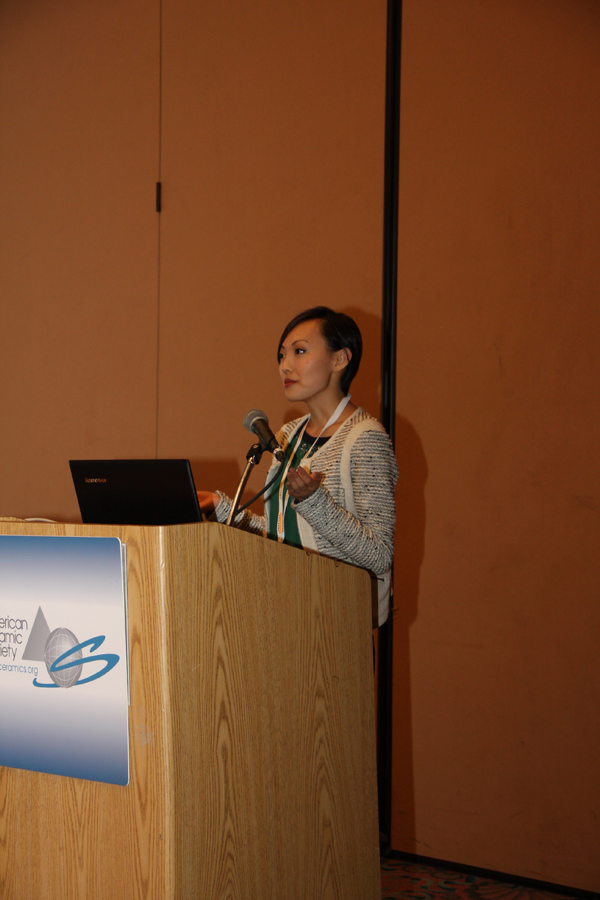
Shirley Zhu, daughter of ICACC regular Dongming Zhu, presented results from her work as a summer intern at NASA Glenn Research Center on silicon carbide additive manufacturing. Credit: ACerS
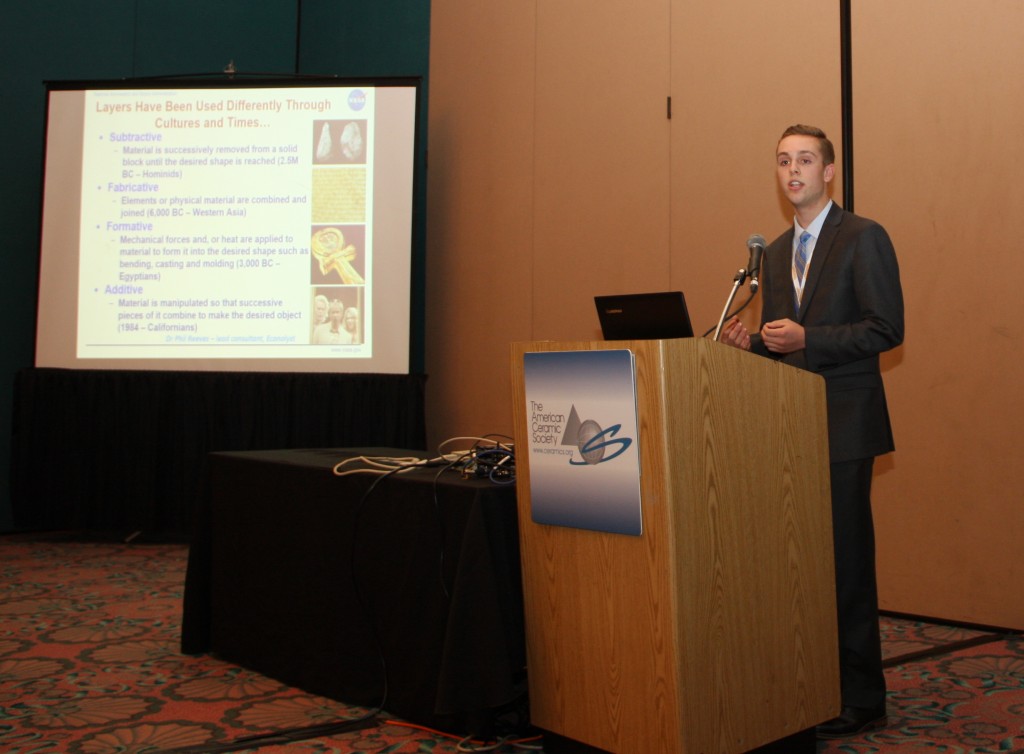
Anton Salem, who also spent time at NASA Glenn as an intern, was one of two notable “second generation” presenters. Credit: ACerS

